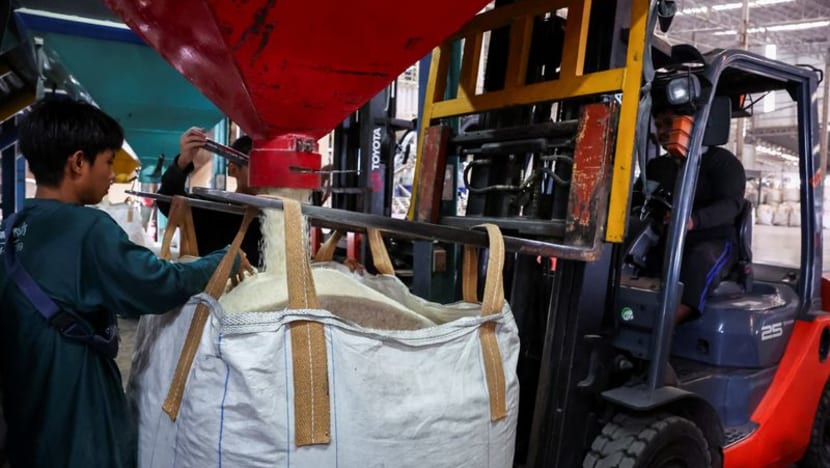Top Stories
Southeast Asian Exporters Face Decisions on Trump’s Tariffs

US President Donald Trump has imposed significant tariffs on various imports, affecting exporters across Southeast Asia. Despite a slight reduction in some tariff rates, the ongoing economic pressure raises a crucial question: should exporters absorb the costs by reducing profit margins, or pass the tariffs onto importers, potentially risking market share? The decisions made may have broader implications not only for the region but also for the US economy.
The tariffs, which Trump refers to as “Liberation Day” tariffs, have led to existing pressures for exporters. Many are likely to choose to pass on the costs, mirroring the responses of competitors in other regions. This shift could result in negative consequences for the US economy, contradicting Trump’s belief that the financial burden primarily falls on foreign sellers, not domestic buyers. The reactions of Southeast Asian exporters and their competitors will be pivotal in determining the ultimate impact of these tariffs.
Research indicates that the pass-through of tariffs to prices can vary significantly based on factors such as competition levels and the specific products involved. The literature suggests that while some tariffs may be absorbed by exporters, others are likely to be passed through to consumers. This dynamic complicates the understanding of how tariffs influence international trade.
Trump recently stated on Truth Social, “Between Walmart and China, they should, as is said, ‘EAT THE TARIFFS’, and not charge valued customers ANYTHING.” The implications of whether exporters absorb these tariffs are profound. If absorbed, it could enhance the terms of trade for the importing country, allowing the US to purchase more imports with its exports. However, if the tariff costs are not fully absorbed, they could lead to increased prices for consumers, impacting lower-income earners disproportionately.
Historical data from Trump’s first term shows that some Chinese exporters absorbed between 10% to 50% of the tariffs on selected products, such as steel. Yet, the overall evidence suggests minimal price changes by exporters in response to tariffs. This time, the situation is different, as the tariffs are more broadly applied across various countries rather than targeting a specific nation like China.
As prices have already begun to rise, the US producer price index reported an increase of 0.9% in July 2025, marking the highest jump in over three years. With the tariff pause concluding in August 2025, further price increases are likely as inventories dwindle. The effects of tariffs will not only be immediate but will also extend through manufacturing supply chains, ultimately contributing to inflationary pressures within the US.
The rising costs of imports will complicate living expenses for many, potentially leading to demands for higher wages to maintain purchasing power. This scenario risks creating a wage-price spiral, potentially necessitating monetary tightening that could stifle economic growth.
Observations indicate a shift in how Southeast Asian countries respond to the tariffs, with some diversifying their trade partnerships to reduce reliance on the US market. As the market for US imports becomes less appealing, the incentive for exporters to absorb tariff costs is likely to diminish. Consequently, this could lead to higher prices and fewer choices for American consumers.
The overarching narrative is clear: while Trump may anticipate that exporters will “eat” the tariffs to maintain competitiveness, evidence suggests that over the long term, tariffs are typically passed through to consumers. As trends indicate a continuation of this pattern, the US faces looming challenges, including rising inflation and a potential slowdown in economic growth.
Ultimately, Southeast Asian exporters may not need to cut their margins significantly if most countries are passing through the tariffs. The complex nature of their manufacturing supply chains, heavily centered on China, makes a quick shift to US production unlikely. Although some exporters may retain their profitability, a slowdown in US economic growth could lead to decreased export volumes.
In conclusion, while there may be varied effects within Southeast Asia, the consequences of Trump’s tariffs could result in negative outcomes for both the US and the global economy. Jayant Menon, a Visiting Senior Fellow at the ISEAS – Yusof Ishak Institute, emphasizes that the ultimate fallout will likely leave the US grappling with challenges such as rising inflation, increased inequality, and a looming risk of stagflation.
-

 Lifestyle4 months ago
Lifestyle4 months agoHumanism Camp Engages 250 Youths in Summer Fest 2025
-

 Business5 months ago
Business5 months agoKenvue Dismisses CEO Thibaut Mongon as Strategic Review Advances
-

 Sports4 months ago
Sports4 months agoDe Minaur Triumphs at Washington Open After Thrilling Comeback
-

 Sports5 months ago
Sports5 months agoTupou and Daugunu Join First Nations Squad for Lions Clash
-

 Top Stories5 months ago
Top Stories5 months agoColombian Senator Miguel Uribe Shows Signs of Recovery After Attack
-

 World5 months ago
World5 months agoASEAN Gears Up for Historic Joint Meeting of Foreign and Economic Ministers
-

 Health4 months ago
Health4 months agoNew Study Challenges Assumptions About Aging and Inflammation
-

 Business5 months ago
Business5 months agoOil Prices Surge Following New EU Sanctions on Russia
-

 Entertainment4 months ago
Entertainment4 months agoDetaşe-Sabah Violin Ensemble Captivates at Gabala Music Festival
-

 Entertainment4 months ago
Entertainment4 months agoBaku Metro Extends Hours for Justin Timberlake Concert
-

 Top Stories5 months ago
Top Stories5 months agoRethinking Singapore’s F&B Regulations Amid Business Closures
-

 Business5 months ago
Business5 months agoU.S. House Approves Stablecoin Bill, Sends to Trump for Signature









